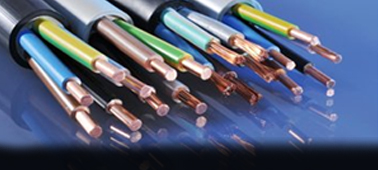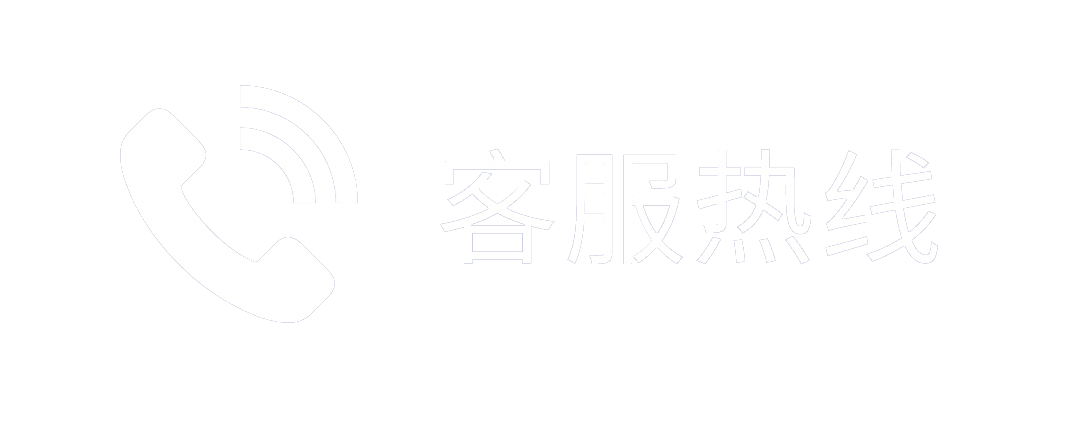How to choose the type and number of fiber in monitoring engineering
Release time:2020-12-14
[guide] in today's high-definition monitoring and camera system applications, optical fiber is the best way to provide bandwidth performance among all the connection modes. When using the optical fiber transmission system, the image quality of the system is only limited by the camera, environment and monitor. The optical fiber transmission system can transmit the image to a very far place, without any form of distortion of the signal, and will not reduce the clarity or details of the image.
In today's high-definition surveillance camera system applications, optical fiber is the best way to provide bandwidth performance among all the connection modes. When using the optical fiber transmission system, the image quality of the system is only limited by the camera, environment and monitor. The optical fiber transmission system can transmit the image to a very far place, without any form of distortion of the signal, and will not reduce the clarity or details of the image. It can be said that the optical fiber transmission system is the lifeline of the whole monitoring system.
1、 Types of optical fibers
Optical fiber can be divided into indoor optical fiber, outdoor optical fiber, branch optical fiber and distribution optical fiber according to different application occasions.
According to the laying mode: self bearing overhead optical fiber, pipeline optical fiber, armored buried optical fiber and submarine optical fiber.
According to the structure of optical fiber: bundle tube optical fiber, layer twisted optical fiber, skeleton optical fiber, holding optical fiber, band optical fiber, non-metallic optical fiber and branchable optical fiber.
By use: long distance communication optical fiber, short distance outdoor optical fiber, hybrid optical fiber and building optical fiber;
Optical fiber can be divided into single-mode and multi-mode according to the transmission mode, and single-mode optical fiber is generally used for monitoring.
Single mode optical fiber: the optical fiber that transmits only one mode of optical signal. There are G.652, G.653, g.654, G.655 and other transmission levels. The single-mode optical fiber can transmit 100 megabit signal for tens of kilometers. Single mode optical fiber only transmits the main mode, that is to say, the light only transmits along the inner core of the optical fiber. Because the mode dispersion is completely avoided, the transmission frequency band of single-mode optical fiber is very wide, so it is suitable for large capacity and long-distance optical fiber communication. The optical wavelength of single-mode optical fiber is 1310nm or 1550nm.
Multimode optical fiber: the optical fiber that can transmit multi-mode optical signal is g.651 grade, which is divided into om1, om2 and OM3 according to the optical mode. The maximum transmission distance of multi-mode optical fiber is 2km. Multimode fiber, in a certain wavelength, there are multiple modes in the fiber transmission, this kind of fiber is called multimode fiber, because of dispersion or aberration, so this kind of fiber transmission performance is poor, the frequency band is narrow, the transmission capacity is small, the distance is short.
2、 Optical fiber laying methods and requirements:
The conventional outdoor optical fiber is the container with loose tube as the core, which is the most common way of laying optical fiber core; the indoor optical fiber is the tight sleeve laying; the core of large core optical fiber is also laid in the form of ribbon.
The laying requirements of optical fiber: the bending radius of optical fiber should be at least 15 times of the outer diameter of optical fiber, and at least 20 times during construction; when laying optical fiber, the rotation of optical fiber disk should be synchronized with the laying speed, and the speed of optical fiber index is generally 15 meters per minute; When laying the optical fiber, the loose radian should be kept at the outlet of the optical fiber, and the buffer margin should be kept, and it should not be too much to avoid the back buckle of the optical fiber; the reserved length of the optical fiber at both ends is 5-10m; when laying the optical fiber, the label should be made and the setting out record should be filled in; all optical fibers should not be exposed.
3、 Selection of optical core
The number of cores is the number of glass fibers contained in each fiber. The following small series to introduce some methods to determine the number of fiber core.
First of all, we should know the number of wiring points in this layer, calculate the number of switches, and whether the connections between switches are stacked or not. If the stack, the core switch for dual hot standby redundancy, then 6-core is enough (2 cores each, 2 cores redundancy). If you don't stack a switch, you need 4 cores. Multiply the number of switches by 4 and add the redundancy of 4 cores. (Note: redundancy: as long as it is more than used, the extra one is called redundant primary standby: one is used, and the other is exactly the same as standby; hot backup: it is in working state at the same time; cold backup: the backup device is in standby state.
Experience: each floor distribution room (horizontal distribution cabinet) is equipped with one optical fiber, which is generally six cores: two cores for use, two cores for standby and two cores for redundancy; there are also eight cores for use. The minimum configuration of the specification is 2 cores per 48 points. Of course, four cores can be selected for 48 points, because two cores are the smallest unit of optical fiber, so it is more appropriate to leave two more cores as spare parts.
The above is how to determine the number of fiber core, you can understand. Backup can be selected according to people, so there are many differences in the number of optical fiber cores. According to the specification, only one minimum selection and one backup core can be selected.
4、 Pay attention
The selection of optical fiber depends not only on the number of optical fiber cores and types of optical fiber, but also on the use of optical fiber to select the outer sheath of optical fiber
1. When the outdoor optical fiber is directly buried, the armored optical fiber should be selected. When it is overhead, the black plastic sheath optical fiber with two or more reinforcing ribs can be selected.
2. When selecting the optical fiber used in the building, attention should be paid to its flame retardant, toxic and smoke characteristics. Generally, the flame retardant and smoke type can be selected in the pipeline and forced ventilation, and the flame retardant, smoke-free and non-toxic type should be selected in the exposed environment.
For vertical wiring in the third floor, layer twisted optical fiber can be selected; for horizontal wiring, branch optical fiber can be selected.
4. If the transmission distance is less than 2km, multimode optical fiber can be selected; if the transmission distance is more than 2km, relay or single-mode optical fiber can be selected.
The above problems are only considered from the aspect of application, and the implementation needs to be flexible. In fact, the wiring environment is complex and diverse, and all kinds of problems may appear at any time, which requires us to implement in strict accordance with the wiring standards in the planning and construction. If we encounter problems, we can analyze them flexibly and solve them successfully.
In today's high-definition surveillance camera system applications, optical fiber is the best way to provide bandwidth performance among all the connection modes. When using the optical fiber transmission system, the image quality of the system is only limited by the camera, environment and monitor. The optical fiber transmission system can transmit the image to a very far place, without any form of distortion of the signal, and will not reduce the clarity or details of the image. It can be said that the optical fiber transmission system is the lifeline of the whole monitoring system.
1、 Types of optical fibers
Optical fiber can be divided into indoor optical fiber, outdoor optical fiber, branch optical fiber and distribution optical fiber according to different application occasions.
According to the laying mode: self bearing overhead optical fiber, pipeline optical fiber, armored buried optical fiber and submarine optical fiber.
According to the structure of optical fiber: bundle tube optical fiber, layer twisted optical fiber, skeleton optical fiber, holding optical fiber, band optical fiber, non-metallic optical fiber and branchable optical fiber.
By use: long distance communication optical fiber, short distance outdoor optical fiber, hybrid optical fiber and building optical fiber;
Optical fiber can be divided into single-mode and multi-mode according to the transmission mode, and single-mode optical fiber is generally used for monitoring.
Single mode optical fiber: the optical fiber that transmits only one mode of optical signal. There are G.652, G.653, g.654, G.655 and other transmission levels. The single-mode optical fiber can transmit 100 megabit signal for tens of kilometers. Single mode optical fiber only transmits the main mode, that is to say, the light only transmits along the inner core of the optical fiber. Because the mode dispersion is completely avoided, the transmission frequency band of single-mode optical fiber is very wide, so it is suitable for large capacity and long-distance optical fiber communication. The optical wavelength of single-mode optical fiber is 1310nm or 1550nm.
Multimode optical fiber: the optical fiber that can transmit multi-mode optical signal is g.651 grade, which is divided into om1, om2 and OM3 according to the optical mode. The maximum transmission distance of multi-mode optical fiber is 2km. Multimode fiber, in a certain wavelength, there are multiple modes in the fiber transmission, this kind of fiber is called multimode fiber, because of dispersion or aberration, so this kind of fiber transmission performance is poor, the frequency band is narrow, the transmission capacity is small, the distance is short.
2、 Optical fiber laying methods and requirements:
The conventional outdoor optical fiber is the container with loose tube as the core, which is the most common way of laying optical fiber core; the indoor optical fiber is the tight sleeve laying; the core of large core optical fiber is also laid in the form of ribbon.
The laying requirements of optical fiber: the bending radius of optical fiber should be at least 15 times of the outer diameter of optical fiber, and at least 20 times during construction; when laying optical fiber, the rotation of optical fiber disk should be synchronized with the laying speed, and the speed of optical fiber index is generally 15 meters per minute; When laying the optical fiber, the loose radian should be kept at the outlet of the optical fiber, and the buffer margin should be kept, and it should not be too much to avoid the back buckle of the optical fiber; the reserved length of the optical fiber at both ends is 5-10m; when laying the optical fiber, the label should be made and the setting out record should be filled in; all optical fibers should not be exposed.
3、 Selection of optical core
The number of cores is the number of glass fibers contained in each fiber. The following small series to introduce some methods to determine the number of fiber core.
First of all, we should know the number of wiring points in this layer, calculate the number of switches, and whether the connections between switches are stacked or not. If the stack, the core switch for dual hot standby redundancy, then 6-core is enough (2 cores each, 2 cores redundancy). If you don't stack a switch, you need 4 cores. Multiply the number of switches by 4 and add the redundancy of 4 cores. (Note: redundancy: as long as it is more than used, the extra one is called redundant primary standby: one is used, and the other is exactly the same as standby; hot backup: it is in working state at the same time; cold backup: the backup device is in standby state.
Experience: each floor distribution room (horizontal distribution cabinet) is equipped with one optical fiber, which is generally six cores: two cores for use, two cores for standby and two cores for redundancy; there are also eight cores for use. The minimum configuration of the specification is 2 cores per 48 points. Of course, four cores can be selected for 48 points, because two cores are the smallest unit of optical fiber, so it is more appropriate to leave two more cores as spare parts.
The above is how to determine the number of fiber core, you can understand. Backup can be selected according to people, so there are many differences in the number of optical fiber cores. According to the specification, only one minimum selection and one backup core can be selected.
4、 Pay attention
The selection of optical fiber depends not only on the number of optical fiber cores and types of optical fiber, but also on the use of optical fiber to select the outer sheath of optical fiber
1. When the outdoor optical fiber is directly buried, the armored optical fiber should be selected. When it is overhead, the black plastic sheath optical fiber with two or more reinforcing ribs can be selected.
2. When selecting the optical fiber used in the building, attention should be paid to its flame retardant, toxic and smoke characteristics. Generally, the flame retardant and smoke type can be selected in the pipeline and forced ventilation, and the flame retardant, smoke-free and non-toxic type should be selected in the exposed environment.
For vertical wiring in the third floor, layer twisted optical fiber can be selected; for horizontal wiring, branch optical fiber can be selected.
4. If the transmission distance is less than 2km, multimode optical fiber can be selected; if the transmission distance is more than 2km, relay or single-mode optical fiber can be selected.
The above problems are only considered from the aspect of application, and the implementation needs to be flexible. In fact, the wiring environment is complex and diverse, and all kinds of problems may appear at any time, which requires us to implement in strict accordance with the wiring standards in the planning and construction. If we encounter problems, we can analyze them flexibly and solve them successfully.










